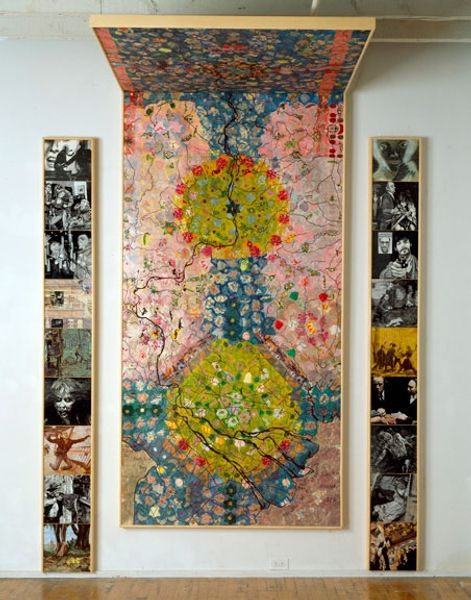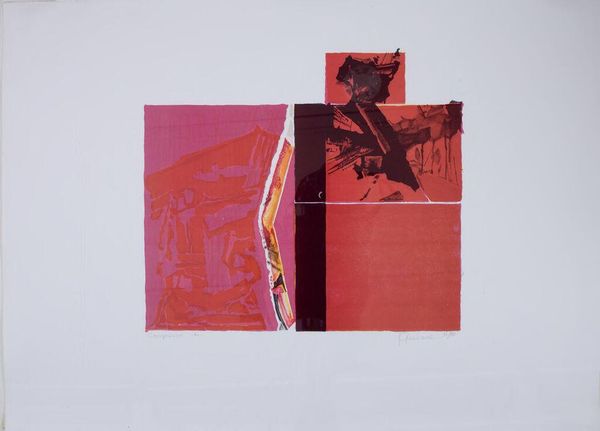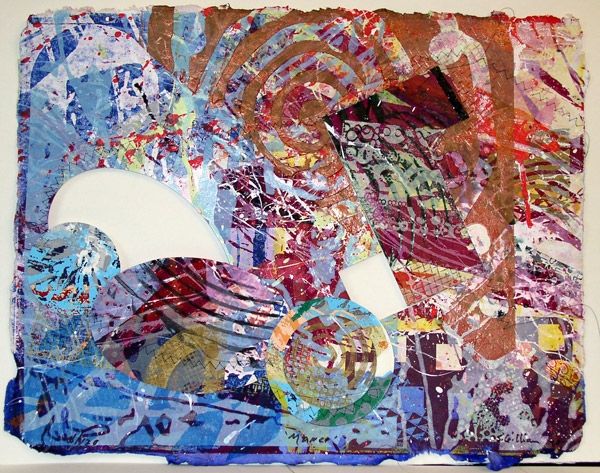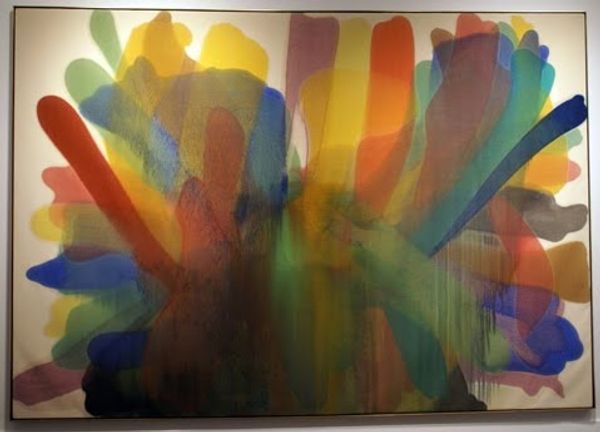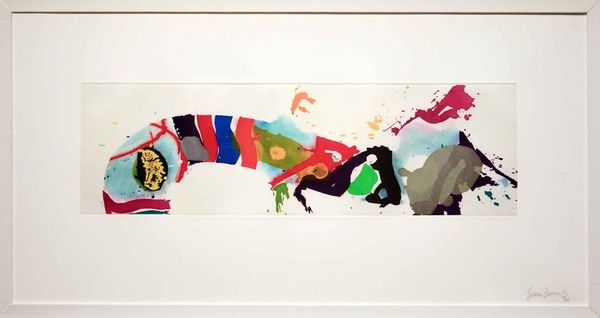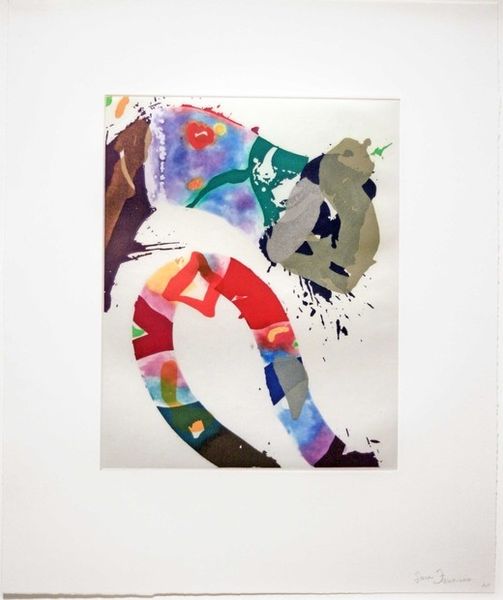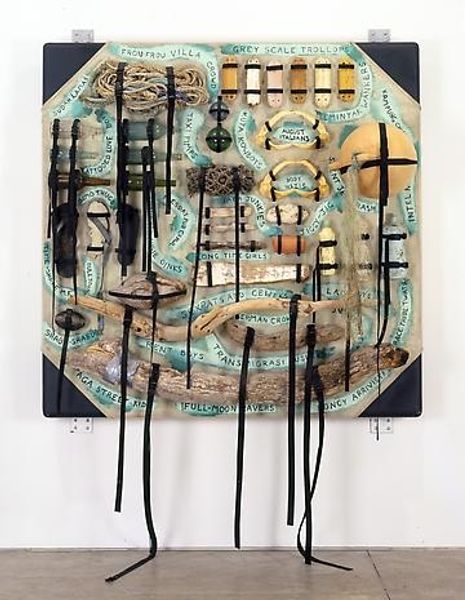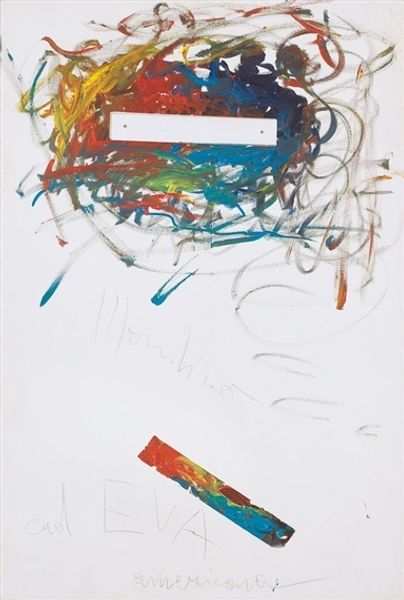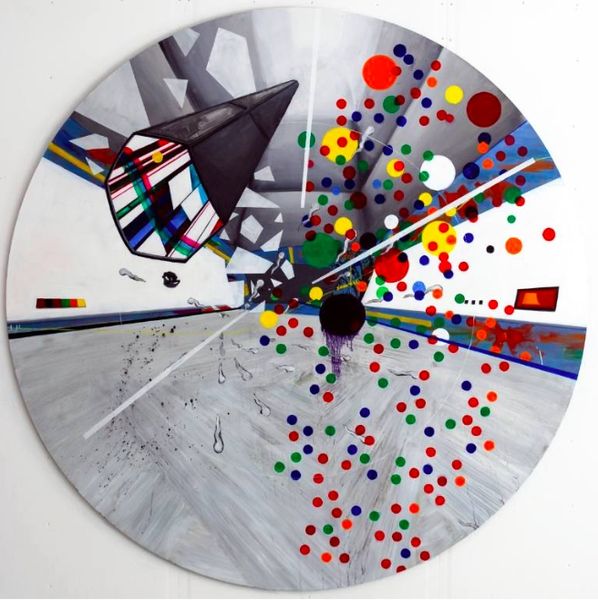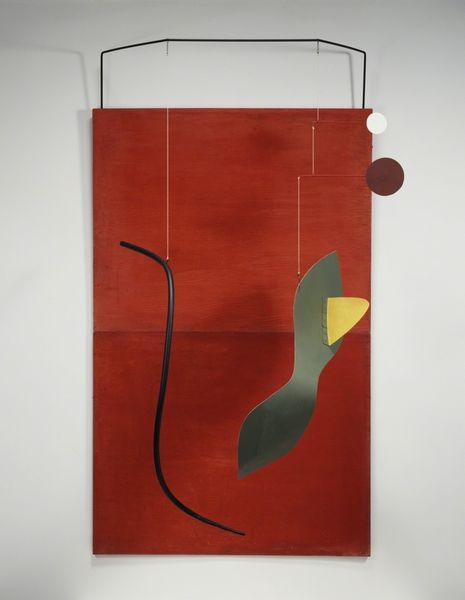
#
neo-dada
#
black-mountain-college
Dimensions: overall installed ("snake" above framed panel): 320 x 228.6 x 61 cm (126 x 90 x 24 in.) overall (framed panel): 187.3 x 229.9 x 14 cm (73 3/4 x 90 1/2 x 5 1/2 in.)
Copyright: National Gallery of Art: CC0 1.0
Curator: Robert Rauschenberg’s mixed-media assemblage, “Altar Peace/ROCI MEXICO,” created in 1985, is certainly a visually striking piece. Editor: Yes, the combination of the swirling form above the main canvas is immediately captivating. It creates a sense of dynamic energy juxtaposed with the collage elements below. I’m curious to explore the potential dialogues occurring between them. Curator: Rauschenberg’s "ROCI," or Rauschenberg Overseas Culture Interchange, project sought to foster international understanding through art. “Altar Peace/ROCI MEXICO” speaks to this aim with its blend of photographic transfers, gouache, and sculptural elements that could allude to cultural exchange and dialogue, don't you think? Editor: Absolutely. The skull motif, for example, prominently featured above the collaged image, inevitably connects us to Mexican culture and the celebration of mortality, though this also touches on a darker undertone when contextualized alongside socio-political matters, like international diplomacy during the ‘80s. And, it reminds me of cultural appropriation—of different ways to celebrate different people, that ultimately look the same but feel different from both perspectives of who appropriates and who is appropriated from. Curator: It also suggests the cyclical nature of life, maybe as it’s impacted by institutional power. I understand that much of the imagery was derived from the artist's time in Mexico, attempting to represent cultural specificities but also universal experiences. The incorporation of everyday images of course challenges the conventional museum altar, right? Editor: Indeed. I agree that the piece acts as an archive that documents the journey of its creator, Rauschenberg. But I can't help but consider who this work benefits. How might a Mexican national view it and its institutional position and display? To what extent is it able to successfully promote cross-cultural understanding when so heavily centered on one person? Curator: Those are crucial questions for us to ask. Understanding the perspective of a national audience allows for a deeper, and definitely richer, understanding of the global role of art during times when culture wars ran rampant. Editor: Well said, this offers an understanding of art beyond just beauty. Thank you for helping to contextualize how power is at play within art history and exhibition design!
Comments
No comments
Be the first to comment and join the conversation on the ultimate creative platform.
